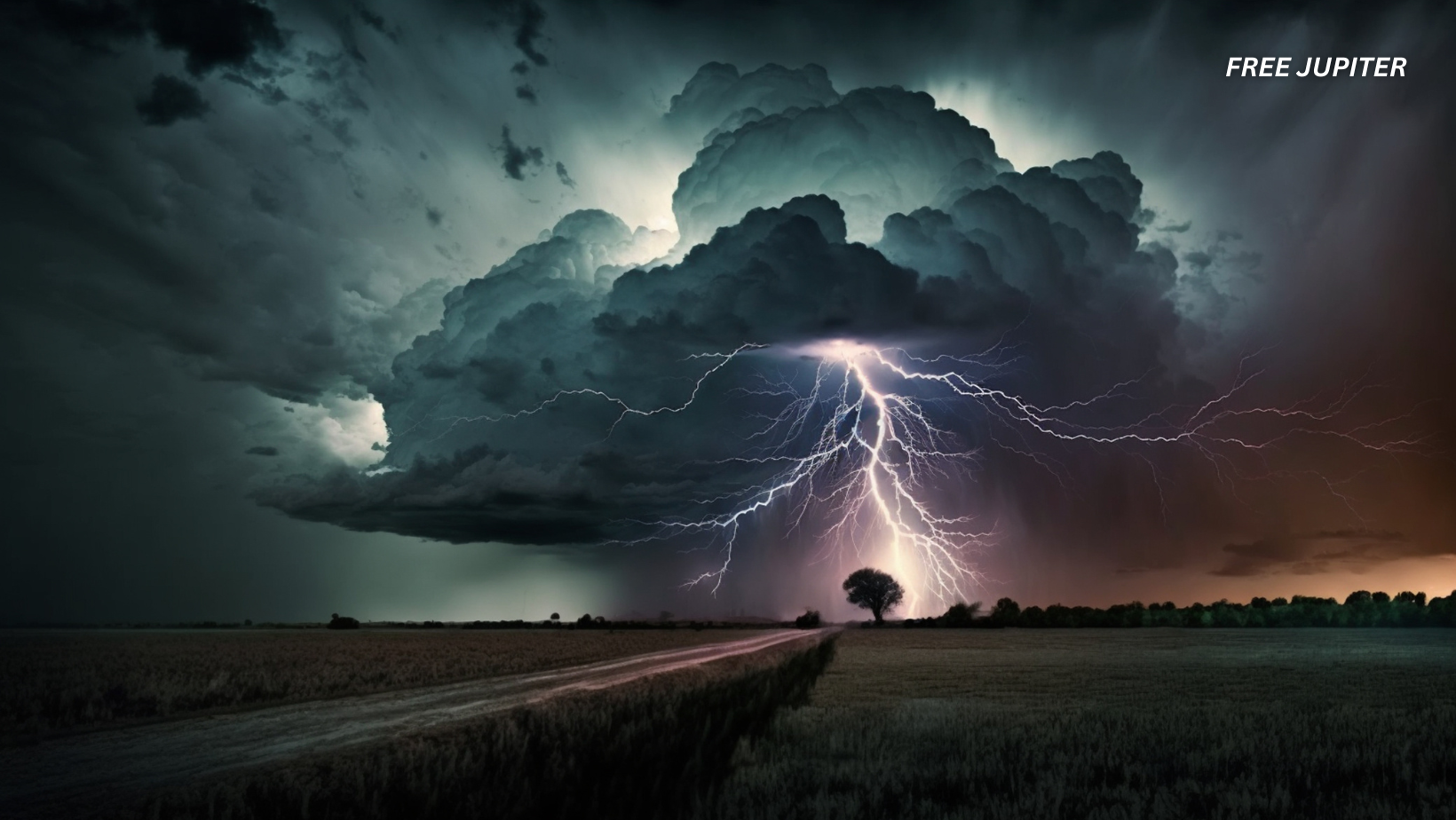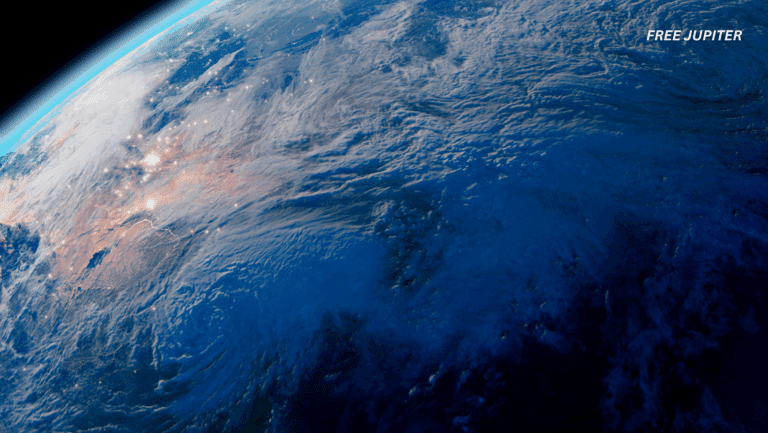Friendly Note: FreeJupiter.com shares general info for curious minds 🌟 Please fact-check all claims—and always check health matters with a professional 💙
Lightning might be one of nature’s most thrilling spectacles, but it’s also wildly misunderstood. Most of us imagine a quick flash in the sky, a thunderclap, and maybe a power outage or two. But in October 2017, something truly extraordinary happened high above the United States — something so enormous, so record-shattering, that scientists are still talking about it years later.
It wasn’t just a lightning strike. It was a megaflash — and this one has officially earned the title of the longest lightning bolt ever recorded on Earth, stretching an unbelievable 892 kilometers (roughly 555 miles) from end to end.
That’s longer than the distance between London and Berlin. Or Manila to Tacloban. Or even, if you’re into road trips, a full eight- to nine-hour drive.
What Is a “Megaflash,” Anyway?
Before we get into how this lightning record was discovered, let’s clear something up: what exactly is a megaflash?
A megaflash is a type of lightning strike that doesn’t just go down toward the ground (like most bolts we’re familiar with) — it travels horizontally through the sky, weaving its way across massive thundercloud systems that can span entire regions. These aren’t your everyday thunderstorms. These are Mesoscale Convective Systems (MCS) — basically giant, sprawling storm networks that are strong enough to power city-wide blackouts, dump torrents of rain, and, evidently, supercharge lightning into record-breaking events.
The 2017 megaflash streaked across the skies from eastern Texas all the way to near Kansas City, Missouri — a path so long, even commercial airplanes would take over 90 minutes to fly it. If you were driving it? Expect a whole workday behind the wheel.
Read more: Leaked AI Conversations Show Users Are Asking ChatGPT to Cross Ethical Boundaries
A Record Years in the Making
Here’s the twist: this record-setting flash wasn’t even recognized until years later.
At the time of the storm, scientists weren’t yet able to capture the full picture of what had happened. It was only after researchers reanalyzed satellite data from the storm that they realized: they’d just stumbled upon the longest lightning bolt in history.
The discovery was confirmed by the World Meteorological Organization (WMO) — the global authority that tracks extreme weather records. According to them, the lightning bolt covered 829 kilometers (515 miles) with a possible margin of error of ±8 km. However, newer satellite analysis pushed the revised estimate even higher: a jaw-dropping 892 kilometers (555 miles).
It overtook the previous record, set in April 2020, by a margin of 61 kilometers.
Why This Flash Was So Special
Lightning can be unpredictable — but megaflashes? They’re in a league of their own.
Unlike typical bolts that strike the ground and vanish in a blink, megaflashes travel laterally across the sky, staying connected through an electric highway of charged clouds. The 2017 megaflash was one of the earliest of its kind captured by NASA’s GOES-16 satellite, equipped with a cutting-edge Geostationary Lightning Mapper (GLM).
This device orbits the Earth, constantly scanning for electrical activity in the upper atmosphere. Without it, the true scale of this lightning strike might have gone unnoticed.
Scientists use a measurement method called the “great circle distance” to calculate how far lightning travels. Think of it like stretching a string between two points on a globe — it’s the most direct path across Earth’s curved surface. This method was used for both the old and new lightning records.
More Than Just a Fun Fact: Why Megaflashes Matter
Now, you might be wondering — aside from being record-breaking, why does this even matter?
Well, here’s the thing: lightning is more than just a flashy sky show. It’s a real danger, responsible for hundreds of deaths and countless wildfires every year. According to WMO Secretary-General Celeste Saulo, understanding how lightning behaves — especially when it can travel such unthinkably long distances — is vital to keeping people safe.
For example, a flash of lightning could strike hundreds of kilometers from the main storm. That means even when the weather seems calm where you are, you could still be at risk if there’s an MCS storm system nearby.
Scientists have even coined a phrase for this scenario: “bolt from the gray.” It’s like its better-known cousin, the “bolt from the blue” — a lightning strike that seemingly comes out of nowhere, traveling from a distant thundercloud into areas where skies may appear calm or only partly cloudy.
Read more: Research Shows Dancing May Treat Depression Better Than Pills
The Role of Satellites in Catching Lightning in the Act
Historically, most lightning detection came from ground-based instruments, like antenna arrays that pick up the electromagnetic pulse from lightning. These worked well — but only up to a point. Because their coverage areas are limited, they couldn’t see the full scale of megaflashes.
Enter satellites.
With the launch of GOES-16 and its follow-ups (GOES-17, 18, and 19), researchers finally had tools that could continuously monitor huge portions of the planet’s atmosphere from geostationary orbit. These satellites don’t just take pictures; they detect and map lightning activity in near real-time.
Other nations have joined in too. Europe’s Meteosat Third Generation and China’s FY-4 satellites now have lightning imaging tech onboard. Together, this global space-based network is revolutionizing how we study the electrical side of storms.
Lightning’s Greatest Hits: Other WMO Records
This megaflash isn’t lightning’s only brush with fame. Here are a few other striking records that WMO tracks:
- Longest lightning duration: In June 2020, a bolt lit up the skies over Uruguay and Argentina for an astonishing 17.1 seconds.
- Most deadly direct lightning strike: In 1975, a single flash killed 21 people taking shelter in a hut in Zimbabwe.
- Worst lightning-related disaster: In 1994, lightning struck oil tanks in Egypt’s village of Dronka. The resulting fire killed 469 people after flaming oil flooded the area.
Staying Safe When Thunder Roars
As lightning expert Walt Lyons puts it: lightning isn’t just flashy—it’s fast and dangerous. So, where’s the safest place to be during a storm?
- Best option: A sturdy building with electrical wiring and plumbing.
- Second-best: A fully enclosed, metal-topped vehicle. (That’s right—cars are safe, but convertibles, golf carts, and motorcycles are not.)
If lightning is within 10 kilometers (6 miles) — that’s close enough to strike — seek shelter immediately. You might not always see the flash or hear the thunder before it hits. Megaflashes, especially, can reach out over long distances in mere seconds.
What the Future Holds for Lightning Research
According to lead researcher Michael J. Peterson, who works with the Severe Storms Research Center at Georgia Tech, we’re just scratching the surface. As satellite data continues to pile up, scientists expect to uncover even more extreme forms of lightning — some possibly bigger, longer, or stranger than anything we’ve seen so far.
More data means better safety alerts, more accurate weather forecasting, and deeper insights into how our planet works during its most intense moments.
Read more: New Study Finds Video Games May Actually Boost Kids’ IQ—Surprising Researchers
Final Thoughts: When Nature Goes Electric
This record-breaking lightning bolt isn’t just a fun weather trivia fact — it’s a stunning reminder of just how powerful, unpredictable, and awe-inspiring nature can be.
Thanks to advances in space technology and a team of passionate scientists, we now know that lightning doesn’t always play by the rules. Sometimes, it stretches the boundaries — literally — and takes us along for the ride.
So the next time you spot storm clouds on the horizon, remember: lightning might be more far-reaching than it seems. Stay safe, look up, and appreciate the sheer scale of the forces crackling above your head.










